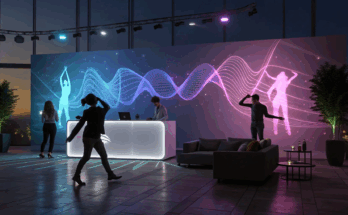In recent years, a genre known as hyperpop has emerged, captivating music enthusiasts worldwide. With its experimental sound and boundary-pushing creativity, hyperpop offers a unique and refreshing listening experience. As we look forward to 2023, let’s delve into the evolution of this genre and explore what may lie ahead for hyperpop.
The Origins of Hyperpop
Hyperpop finds its roots in the early 2010s when artists began to experiment with electronic and pop elements in their music. This fusion resulted in a hyperkinetic, high-energy sound that challenged traditional genre conventions. Notable artists like PC Music, SOPHIE, and Arca pushed the boundaries of pop music, incorporating elements of bubblegum pop, EDM, and even experimental noise music.
With its futuristic and alien-like production, hyperpop soon gained a cult following. Its popularity expanded with the rise of internet communities and social media platforms like TikTok that allowed music to be shared and discovered effortlessly. As hyperpop’s influence grew, it began to infiltrate the mainstream music scene, with artists like Charli XCX and Dorian Electra incorporating hyperpop sensibilities into their work.
The Evolution of Hyperpop
As we arrive in 2023, hyperpop continues to evolve and adapt, bringing with it new possibilities and directions for the genre. Artists are increasingly blending hyperpop with other genres, resulting in subgenres such as hyperpop rap, hyperpop punk, and hyperpop R&B. This cross-pollination creates an exciting fusion of styles, challenging the boundaries of what hyperpop can be.
One significant development within hyperpop is its increased embrace of diverse voices and identities. The genre has traditionally been associated with LGBTQ artists, who have used hyperpop as a vehicle to express their individuality and challenge societal norms. Going forward, hyperpop will continue to celebrate diverse voices, amplifying underrepresented communities and offering a platform for self-expression.
The Future of Hyperpop
Looking ahead, hyperpop is poised for continued growth and exploration. One aspect that will shape the future of hyperpop is technology. As advancements in music production software, virtual reality, and artificial intelligence continue to emerge, artists will have more tools at their disposal to push the boundaries of sound even further. Expect to witness a fascinating blend of the organic and the digital within the hyperpop landscape.
Additionally, collaborations among hyperpop artists and mainstream acts will become more prevalent. As hyperpop gains mainstream recognition, established artists will be drawn to its unapologetically unique sound. These collaborations will further propel hyperpop into the global music scene, granting it even greater exposure and influence.
Another significant factor driving the future of hyperpop is the growing demand for alternative and experimental music. Mainstream listeners are increasingly craving fresh sounds and innovative approaches to music. Hyperpop, with its unconventional vocal manipulation, glitchy soundscapes, and genre-blending nature, offers a perfect antidote to traditional pop music. As long as there is a hunger for artistic exploration, hyperpop will continue to push boundaries and evolve.
In Conclusion
Hyperpop has come a long way since its inception, constantly evolving and defying musical expectations. As we enter 2023, this genre shows no signs of slowing down. With its unique fusion of electronic, pop, and experimental elements, hyperpop will continue to captivate music enthusiasts worldwide.
Looking to the future, we can expect hyperpop to diversify further, embracing collaborations, pushing technological boundaries, and celebrating voices that have traditionally been underrepresented. As the music industry adapts and evolves, hyperpop will undoubtedly be at the forefront of shaping the musical landscape, offering exciting and boundary-pushing creations for years to come.



